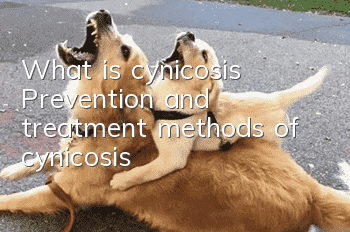What is cynicosis? Prevention and treatment methods of cynicosis

Demodex
Demodex is translucent and milky white, with a long and narrow body like a worm, with a body length of 0.25~0.3mm and a width of 0.04mm. The body can be divided into three parts: front, middle and back. The insect's mouthparts are located at the front of the insect body and are horseshoe-shaped. In the middle, there are 4 pairs of very short legs with 5 segments. The rear part of the insect body is relatively slender, and the surface of the rear part is densely covered with Horizontal lines. The entire life cycle of Demodex canis occurs in hair follicles, with four stages: egg, larvae, nymph, and adult. The nymph has three stages. Canine Demodex mainly parasitizes the upper part of the hair follicles of the affected skin, and can soon move to the bottom, and rarely parasitizes in the sebaceous glands. In addition to being able to parasitize in hair follicles, the pathogen can also parasitize in the tissues and lymphoid tissues of dogs, and some of them will reproduce in them.
Prevention and treatment methods:
To treat Confucian mites and bacteria at the same time, injectable drugs are combined with topical drugs. To treat mite infection, drugs such as doramectin, ivermectin, and abamectin can be injected subcutaneously, once every 7 days, and each course of treatment lasts for 4 to 5 weeks. For systemic itching, dexamethasone injection or oral prednisone acetate, chlorpheniramine, etc. can be used, but the time of use should not exceed 3 days to avoid the growth of bacteria; when pustules or abscesses occur, antibiotics should be given for combined treatment. Applying ivermectin-containing bath solution to the skin of affected dogs is an effective auxiliary therapy.
Vic Medicinal Shampoo and Derma Medicinal Shampoo have good auxiliary therapeutic effects.
- Why do dogs like to bark? How to train a dog not to bark?
- How to treat canine distemper in Belgian Shepherd Dogs
- Signs of depression in dogs
- Is erythromycin eye ointment effective for dogs?
- How to use dog ear drops
- How to lose weight for golden retrievers
- Steps and Basics of Training a St. Bernard Dog
- Can a dog take a bath after 15 days of menstruation?
- The causes and diagnostic points of rabies
- Why do dogs have little black spots on their bodies?



